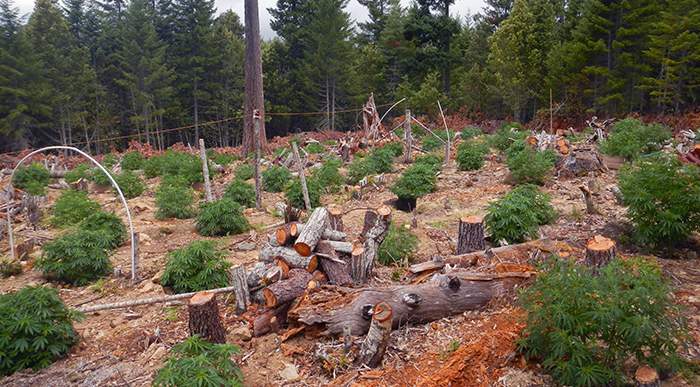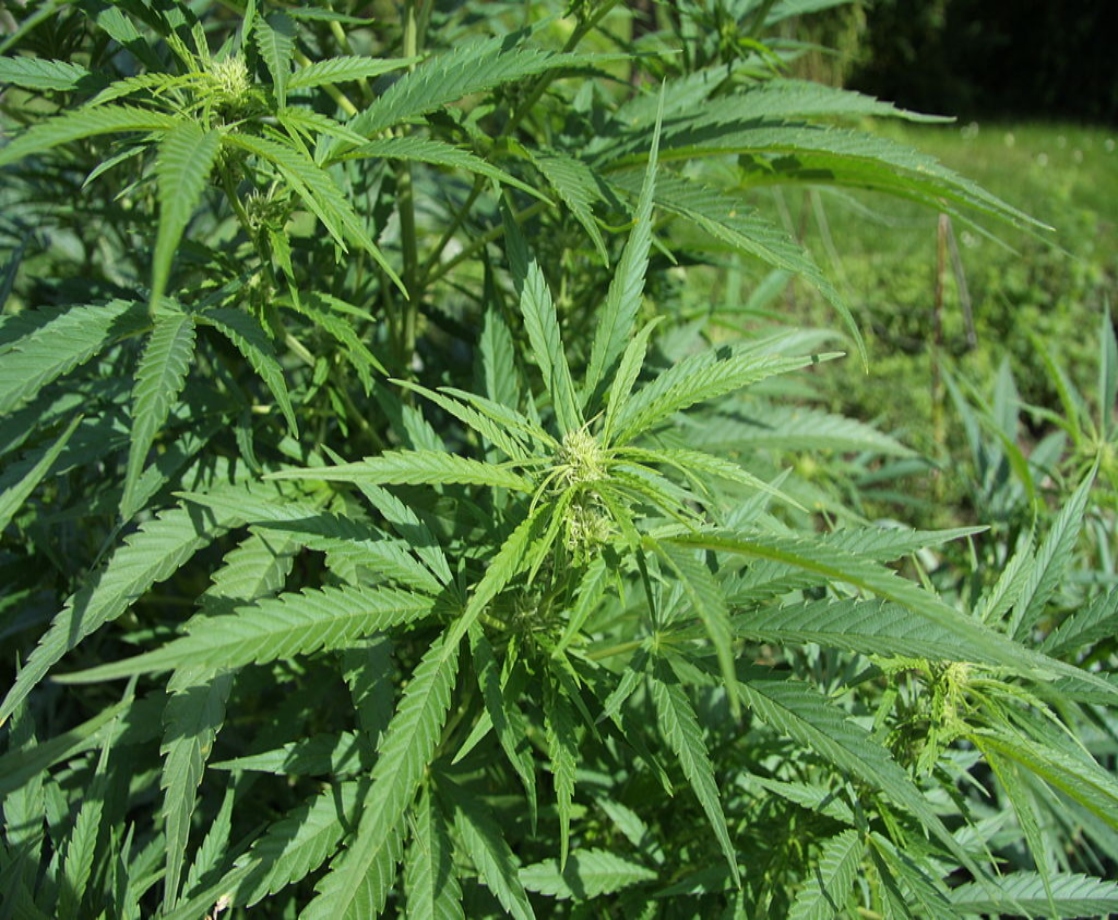California is, by far, the United States biggest legal medical marijuana market, with an estimated 2015 worth of $2.5 billion. That marketplace is likely about to explode, as a new state law this year eliminated restrictions on profits from marijuana businesses.
But in vast stretches of Northern California, particularly a three-county region called the Emerald Triangle, which is the single largest marijuana-producing area in the country, illicit growing operations are still rampant. And these unregulated grows are having a major impact on the region’s environment.
According to the California Department of Fish and Wildlife’s Lt. Warden Chris Stoots, as public opinion and state policy has moved away from the drug-war mentality of the past, “all law enforcement agencies began to shift towards the environmental aspect.” In recent years, that means the CDFW has taken a greater role, forming units dedicated to marijuana eradication and watershed enforcement.
While Stoots says there are an estimated 35,000 private marijuana gardens in California, the CDFW are primarily concerned with “large-scale, public land grows … usually if not always associated with some type of drug trafficking organizations.”
The CDFW conservatively estimates approximately 4,000 trespass grows exist annually throughout both public and private lands and sensitive waterways, says Stoots, with up to 80,000 to 100,000 acres of woodland negatively affected, as well as a wide variety of wildlife. Lands reserved for wildlife and public recreation are often sites for these illegal farms, since these rural areas naturally lend themselves to secrecy.
“The sensitive nature of the environment where cultivation is occurring is what makes the environmental impact so compounded,” Stoots says.
Water diversion—the illegal theft of water resources—is a major concern. Although marijuana’s overall impact compared to industrial-scale agricultural crops in the state is small, the plants still require a large amount of water amid California’s ongoing drought.
But another pernicious environmental impact comes from the illicit use of fertilizers, herbicides, pesticides and other chemicals to protect the growth of the crops. Some of the chemicals are extremely toxic, while others are restricted by the government. One in common use, carbofuran, was banned for crops intended for human consumption by the Environmental Protection Agency in 2009.
That’s a ban intended for the pesticide applied at its normal concentration, by workers trained and experienced in its use. Illicit marijuana growers not only don’t abide by those regulations in the first place, but also apply the chemicals haphazardly—often with intent to kill wildlife.
While studying the population decrease of a small, weasel-like predator in the Sierra Nevada called the Pacific fisher, which had shrunk to below 2,000 in 2014, Integral Ecology Research Center wildlife disease specialist Mourad Gabriel discovered that nearly 80 percent of tissue samples his team had collected since 2005 tested positive for a variety of poisons.
Gabriel says illicit growers were most likely laying poison for rodents, which were then subsequently eaten by the fishers.
“We’re talking about people who are not versed in pesticide application, maybe putting a pesticide out there that is to be used over 50 acres of land, and they’re putting that same amount of chemical on a half an acre,” he adds.
“Not only are these chemicals they are using dangerous, they are not being used for their original purpose or intent,” says Stoots.
“They’re intentionally putting a lot of these types of pesticides out there to kill wildlife,” says Gabriel. A problem with the fisher likely indicates a “problem with multiple other species,” Gabriel adds. “We’re looking at bears, deer, federally endangered species like northern spotted owls, bobcats, mountain lions … when we’re looking at these species are we finding them exposed to pesticides? Oh, most definitely."
The pesticide are sprayed, applied as a paste or even left open in cans, where animals often eat it directly. Stoots says exposure to what wildlife officers call the “pink stuff”—carbofuran paste applied directly to trunks and stems—sickened several officers in 2014, requiring a Centers for Disease Control debriefing.
It’s “some pretty nasty stuff,” says Stoots. “You wouldn't want to mess with it.”
Since the sites are located in close proximity to waterways, the chemicals can easily end up there. One of Stoots’ colleagues, Lt. John Nores, says the most devastated site he saw was his first, a 7,000-plant site in Santa Clara County in 2004 where carbofuran was applied.
The site had “five miles of Coyote Creek polluted, with all Steelhead trout [federal and state listed threatened and endangered species] and other aquatics dead in that five-mile span,” writes Nores. “Fortunately, a full reclamation and water quality restoration of that site yielded the return of these species after a two-year period, but many sites do not currently get the attention needed to remedy these wildlife losses.”
Other impacts include huge mounds of trash left behind by the caretakers of the sites, as well as removal of what is in some cases miles of illegally installed water pipelines. As both Stoots and Gabriel note, the guards often shoot wildlife encroaching on the grows.
It doesn’t have to be this way. As NPR reported in 2010, competition from legal pot caused overall weed prices to plummet, hurting the illegal market—and as Gizmodo’s Alissa Walker wrote last year, many growers desire clearer regulation so they can be in compliance.
According to Gabriel, with regulated marijuana grows there’s a “give and take,” even though they can still have a major environmental impact.
“People have this panacea that the minute it gets legalized that everything is just gonna disappear,” he says.
But with “the clandestine activity there’s no positive to it at all,” he says. There’s no question in Gabriel’s mind the scientific data shows the problem is growing worse: “Whether it’s the beginning or end of the storm has yet to determined.”











